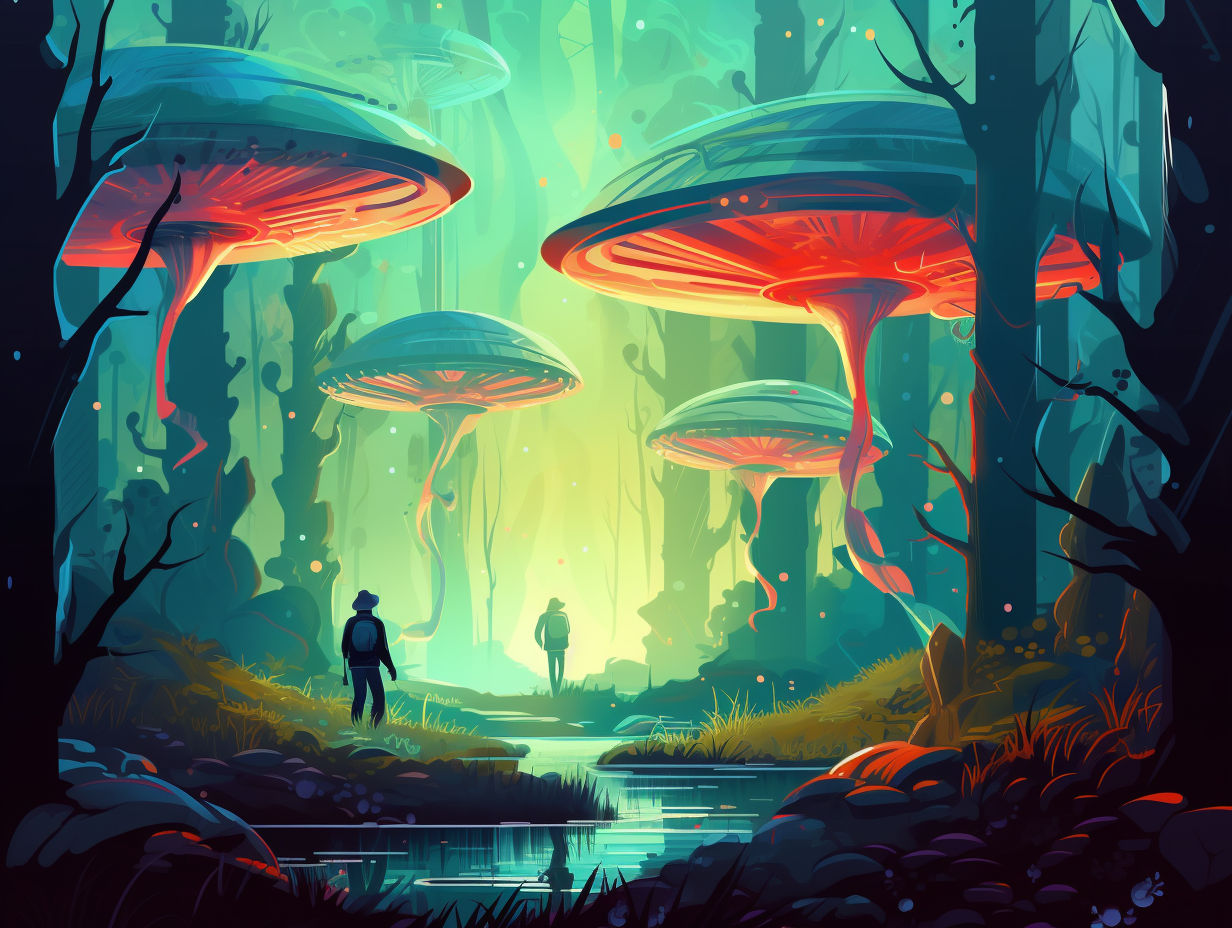13 Out-of-This-World Fun Facts About Aliens You Won't Believe!

1. ET Drive-In Movie Theater
If ETs had a stellar drive-in movie theater, this would be their main attraction: KIC 8462852, also known as Tabby's Star, has experienced mysterious fluctuations in brightness dropping by as much as 20%, prompting scientists to ponder if an object is repeatedly passing in front of the star, possibly hinting at extraterrestrial life.
Source => science.org
2. Cosmic Hitchhikers Delivery Service
We come in peace, bearing organic molecules: The theory of panspermia suggests that life exists throughout the universe and could be distributed via cosmic hitchhikers like space dust, meteoroids, and comets, potentially delivering the building-blocks of life to different planetary surfaces where they may evolve into living beings. Yet, it remains a fringe theory, receiving little support from mainstream scientists and proving challenging to test experimentally.
Source => en.wikipedia.org

Did you know that bread crumbs are a major threat in space? Discover how tortillas save the day on the ISS and learn about astronauts' unique taste bud adventures!
=> Fun Facts about Space
3. Swiping Right for Alien Life
Searching for aliens certainly isn't as simple as swiping right: Optical SETI, using laser technology, might be the most efficient method to find extraterrestrial intelligence. These laser signals can carry more data and penetrate interstellar dust better than visible light. However, for us to detect these signals, an alien civilization would have to purposefully point a laser our way. This high-tech cosmic speed-dating strategy has been in use since 1961 when Charles Townes introduced the concept, and SETI astronomers are still on the prowl, using telescopes and observatories worldwide.
Source => forbes.com
4. Dyson Sphere Solar Power
Who needs solar panels when you've got Dyson spheres – the eco-friendly, alien-approved alternative: First conceptualized by astronomer Freeman Dyson in 1960, these hypothetical megastructures would encircle stars to harvest their energy, taking sustainability to new cosmic heights. Though they're theoretically possible and could hint at extraterrestrial life, we earthlings are still eons away from such advanced engineering, and so far, no one's spotted E.T. soaking up the sun with a Dyson sphere in tow.
Source => en.wikipedia.org

5. Proxima b: Earth's Sunbathing Cousin
If Earth had a distant cousin who loves to sunbathe a bit too much, Proxima b would be it: The closest known exoplanet to us, Proxima b has a minimum possible mass just 17% more than that of Earth, and is potentially a rocky, terrestrial planet situated in the habitable zone of its star. However, its close and tight relationship with its star might mess up its chances of having an atmosphere, thus putting a lid on its life-hosting party.
Source => space.com
6. Kepler 452b: Earth's Long-Lost Relative
If you've been thinking of visiting your long-lost cosmic cousin, pack your bags and get ready for one heck of a journey: Kepler 452b, a planet 1,400 light years away, is considered Earth's distant relative because it sits comfortably in both the abiogenesis and Goldilocks zones, making it a potential hotspot for extraterrestrial life. But you might want to hold off on that one-way ticket, as it's too far to thoroughly study with our current technology – though next-gen telescopes like TESS and James Webb Telescopes might help us get better acquainted with our potentially life-hosting doppelgängers!
Source => news.sky.com
7. Fairy Circles: Martian Agriculture Misconception
Aliens, step aside and hold onto your Martian antennas: turns out the mysterious fairy circles in Namibia's grasslands aren't caused by futuristic joyrides or extraterrestrial agriculture, but rather by plant water stress. The University of Göttingen uncovered that these eerie crop circles, previously blamed on cosmic commuters or even thirsty termites, are actually formed when healthy grasses surrounding the circles deplete water inside, leaving the interior grass high and dry... well, mostly dry. In a mind-boggling game of botanical survival, these fascinating formations keep grasses greener where it counts.
Source => scitechdaily.com
8. Cosmic Hide-and-Seek
Haven't we always wondered what aliens think of us? One thing's for sure, scientists are keen on playing a classic game of hide-and-seek with our extraterrestrial friends: A new study suggests that using laser beams, humans can cleverly conceal life-generated biosignatures in Earth's atmosphere, making our planet appear like a barren world to these cosmic neighbors. This nifty technique might also be used for intergalactic chats during planetary transits!
Source => space.com
9. Earth: A Wildlife Preserve for Aliens
Ever feel like you're living in a cosmic wildlife preserve, but everyone else got the memo to keep quiet? Well, you just might be: The "zoo hypothesis" suggests that extraterrestrial civilizations have chosen to silently observe Earth and its inhabitants, explaining our lack of contact with any alien life forms. This cosmic voyeurism provides a compelling reason for METI, the practice of sending radio signals into space in an attempt to catch an alien whisper or two. But let's simmer down the optimism – alien civilizations might not be as interested in preserving Earth's natural order as we'd like to think.
Source => nbcnews.com

10. Microbial Extraterrestrial Neighbors
If little green men come knocking at your door asking for sugar, don't be surprised: Scientists believe that while microbial life might be thriving across the universe, intelligent extraterrestrial life is probably a rare breed, making the discovery of amoebas, fungi, or plant-like beings on other planets within our solar system quite plausible.
Source => mdpi.com
11. Enceladus' Icy Ocean Call
Perhaps Saturn's moon Enceladus phoned home to ET, whispering "water you waiting for?": Beneath its icy surface lies a massive ocean, comparable to Earth's Lake Superior, hinting at the possibility of extraterrestrial life forms lurking in its depths.
Source => wired.com
12. Waterworlds: Galaxy Edition
Move over, Kevin Costner, our galaxy could be teeming with real Waterworlds: Astronomers speculate that certain exoplanets may consist of up to 50 percent water, boasting oceans hundreds of kilometers deep and an icy mantle below, making them potential havens for extraterrestrial life.
Source => newscientist.com
13. Alien Rave Invitations
Are aliens throwing extraterrestrial raves and we're not invited? Fear not, Earthlings, for scientists have embarked on an intergalactic quest to intercept their cosmic party invites: The VLA, SETI Institute, and Breakthrough Listen Initiative are collaborating to search for signals from technologically advanced alien civilizations, scanning frequencies and examining around ten million star systems using COSMIC, a new processing system developed by SETI.
Source => seti.org
Related Fun Facts




















